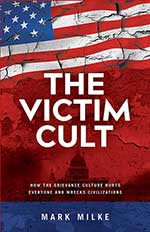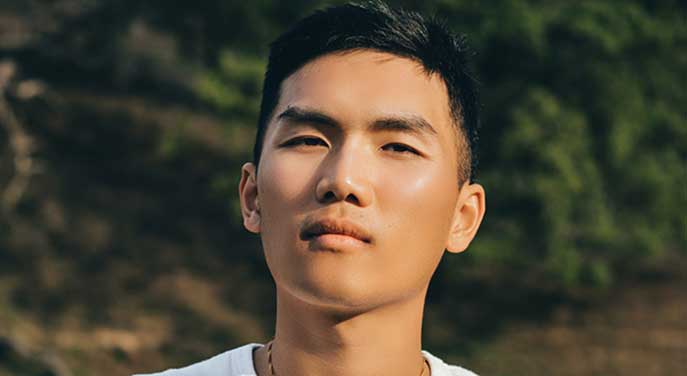- How British imperialists abolished slavery
- BLM’s attack on empiricism – and capitalism
- How to tell fake victims from actual victims
- How early Asian Americans trumped prejudice
- The myth of systemic racism
- Why we need a statute of limitations against the past
- Claims of systemic racism ignore historical realities
The following is an excerpt from The Victim Cult: How The Grievance Culture Hurts Everyone And Wrecks Civilizations by Mark Milke. In this excerpt, Milke details how the “new” definition of racism from Ibram X. Kendi and others hollow out hard facts and reasoned analyses when a monocausal explanation – racism – is offered up for all observed disparities between cohorts.
 With a relentless pushback against the discriminatory intentions of others and the assumption that integration was desirable, the emerging Pacific class was already preparing the foundation from which future generations would catapult into the highest reaches of American life. In addition to fighting prejudice in society, politics and the courts, another factor must be credited with Asian American success: entrepreneurship.
With a relentless pushback against the discriminatory intentions of others and the assumption that integration was desirable, the emerging Pacific class was already preparing the foundation from which future generations would catapult into the highest reaches of American life. In addition to fighting prejudice in society, politics and the courts, another factor must be credited with Asian American success: entrepreneurship.
In any society, the entrepreneurial ethic is a potentially society-transforming value: Entrepreneurs have to be optimistic and believe in future success; otherwise, risk-taking is psychologically impossible. That optimism also contributes to an ethic of possible abundance instead of leading to fights over a stagnant pool of wealth; thus, a commercial culture contributes to a wider-opportunity ethos in communities. Moreover, immigrants who resettle in another, utterly foreign land are by that action already risk-takers and, for early Chinese and Japanese immigrants, the orientation for entrepreneurial activity sprang from multiple influences, including cultural attitudes inculcated over time and which later percolated abroad.
An example of entrepreneurial Chinese Americans in the late-19th century comes from Chicago, courtesy of one ex-labourer, Moy Dong Chow. While in California, Moy had already fixed his eye on Chicago and the opportunities of a city at the crossroads of a river, lake, and commerce. Once in Chicago, Moy wrote to Chinese compatriots in San Francisco, encouraging them to come to Chicago; some did, and so too, over the next decade, did 40 of Moy’s extended family from Taishan county in Guangdong.
 The result of Moy’s risk-taking led to Chinese entrepreneurs setting up not only in Chinatown but in black and white neighbourhoods, where they opened small businesses including grocery stores, restaurants, laundries, and cigar shops. From one person of Chinese ancestry in 1870 in Chicago to 584 by 1890 and 1,179 in 1900, the start of that city’s Chinese community had much to do with Moy, whom contemporaries described as known for his “stubbornness, resourcefulness and shrewdness.”
The result of Moy’s risk-taking led to Chinese entrepreneurs setting up not only in Chinatown but in black and white neighbourhoods, where they opened small businesses including grocery stores, restaurants, laundries, and cigar shops. From one person of Chinese ancestry in 1870 in Chicago to 584 by 1890 and 1,179 in 1900, the start of that city’s Chinese community had much to do with Moy, whom contemporaries described as known for his “stubbornness, resourcefulness and shrewdness.”
To be sure, the rise of the East Asian entrepreneur class was also an imperative, connected to a lack of other career choices. In California, as late as 1938, Chinese Americans were still barred from many professions, including law, dentistry, veterinary science, medicine, architecture, financial administration, and even the realtor’s profession; most unions also barred Chinese and other Asian Americans during those decades. Government and societal discrimination left enterprising individuals and families with few options but to strike out on their own. The result was a channelling of labour into service work, railway construction, or starting a business. Early Chinese immigrants and second- and third-generation Americans were often forced to carve out niche business opportunities in their communities and, where possible, in the broader population because of the limitations in other fields.
The Japanese story was similar, with discrimination and banishment from many professions the norm. That left most Japanese Americans little choice but to accept careers in service, agriculture, fishing, and small merchant activities. In the first 40 years of the 20th century, a higher-than-average proportion of Japanese relative to the general population were small-scale entrepreneurs, operating grocery stores, laundries, restaurants, shoe shops, and other businesses. Nevertheless, as author Iris Chang summarizes the phenomenon of the Chinese communities, the “reverence for education, hard work, thriftiness, entrepreneurship, and family loyalty… helped many achieve rapid success in their adopted country.”
Discrimination was intense for both the Chinese and Japanese communities at the time, but that didn’t stop them from charting a course to success and for a share in the American Dream based on a desire for equal opportunity. Entrepreneurs and capitalism, broadly understood, were part of the reason why they brought “old country” habits and ethics with them, refined in the furnace of prejudice and anti-Asian policies in the new world.
Perhaps the most consequential factor in the eventual rise of the Pacific class in America over the coming days was education. In the early decades of the 20th century, education was already relentlessly pursued in both Chinese and Japanese families. In the Chinese community, it resulted in part from the historic Confucian emphasis on “book learning as a worthy goal,” but also for entirely practical reasons: Chinese immigrant parents desired a better life for their children.
Given that career choices were often limited by legally enforced discrimination, by unofficial prejudice-laced barriers, by poor English skills, or by the need for capital to start a business, immigrant parents, as one historian writes, emphasized medicine and engineering, which were also “lucrative, prestigious and stable.”
While in 1910 the proportion of Chinese and Japanese children in attendance at school was significantly below that of whites, by 1920 students of Japanese and Chinese ancestry at most ages matched or surpassed white children in school enrollment. The trend was even more pronounced by 1930.
Higher-than-white enrollment at the primary and high-school levels was soon matched by similar statistics at college, more evidence of this anti-victim phenomenon: whenever possible East Asian Americans did not wait for long-deserved equal opportunity in American laws and institutions before carving out their future and their children’s opportunities – in this case, via education. It was all the more remarkable given that the years between 1924 and the Second World War were among the worst decades for institutionalized racist discrimination against Asian Americans.
Remarkably, the cascading educational achievement of Japanese and Chinese Americans in the early-20th century was not due to any institutionalized lessening of discrimination, as the opposite – growing political prejudice – was occurring. In the first three decades of the 20th century, organized labour, governments, their agencies, and courts relentlessly shut down attempts by those with Asian heritage to naturalize, own and cultivate farms, start a business, and even integrate.
Undermined prejudice
The reality of significant achievement by the two communities should call into question the assumption and then the expectation that discrimination is always and everywhere a deterministic factor in education, income, and life achievement. It is a popular notion but often incorrect. The record of the Japanese and Chinese communities serves as a hopeful reminder that the prejudice of others need not permanently snare all who encounter it.
Next: The myth of systemic racism
Mark Milke, Ph.D., is a public policy analyst, keynote speaker, author, and columnist with six books and dozens of studies published across Canada and internationally in the last two decades. Visit www.victimcult.com for more information.
Mark is a Troy Media Thought Leader. For interview requests, click here.
The opinions expressed by our columnists and contributors are theirs alone and do not inherently or expressly reflect the views of our publication.
© Troy Media
Troy Media is an editorial content provider to media outlets and its own hosted community news outlets across Canada.

